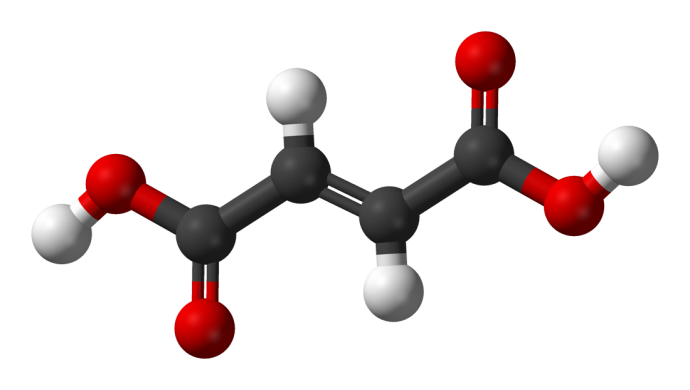
Fumaric Acid is also known as trans-butenedioic acid and is white crystalline chemical compound with the formula HO2CCH=CHCO2H. Fumaric Acid is one of two isomeric unsaturated dicarboxylic acids and the other is maleic acid, which is a less stable molecule than Fumaric Acid. Fumaric Acid can be found in fumitory, bolete mushrooms, especially in Boletus fomentarius other than pseudo-igniarius, lichen, and Iceland moss.
Scientists at Creative Proteomics utilize a highly quantitative method with high-performance liquid chromatography (HPLC) for the determination of Fumaric Acid levels in various samples, including Food and more. High-Performance Liquid Chromatography (HPLC) with UV detection is used for the determination of Fumaric Acid (213 nm) levels in a lot of biological samples. This Methodology provides accurate, reliable, and reproducible results of Fumaric Acid measurement, which enables us to analyze of Fumaric Acid levels in vitro and in vivo.
Fumaric acid is an intermediate in the citric acid cycle, which is is a series of chemical reactions used by all aerobic organisms to generate energy y in the form of adenosine triphosphate (ATP). Fumaric acid is formed by the oxidation form succinate by the enzyme succinate dehydrogenase, which is an enzyme complex bound to the inner mitochondrial membrane of mammalian mitochondria, in the following biochemical reactions, fumaric acid is converted to malate catalyzing by the enzyme named fumarase. Fumaric is also a product of the urea cycle, which is a cycle of biochemical reactions occurring in many animals that produces urea ((NH2)2CO) from ammonia (NH3). Fumaric Acid has been approved for use as a food additive in the Eu, USA and Australia and New Zealand.
The Russian-Polish botanist M. Tswett is generally recognized as the first person to establish the principles of chromatography. In a paper he presented in 1906, Tswett described how he filled a glass tube with chalk powder (CaCO3) and, by allowing an ether solution of chlorophyll to flow through the chalk, separated the chlorophyll into layers of different colors. He called this technique “chromatography”. Fundamentally, chromatography is a technique used to separate the components contained in a sample. High Performance Liquid Chromatography (HPLC) is a method able to separate non-volatile, thermally unstable, and polar components separate or in a mixture. HPLC is a type of chromatography that, because of its wide application range and quantitative accuracy, is regarded as an indispensable analytical technique, particularly in the field of organic chemistry. It is also widely used as a preparation technique for the isolation and purification of target components contained in mixtures.
Fumaric Acid Analysis Service at Creative Proteomics supports your research in Fumaric Acid Analysis. HPLC Based Analysis Service Platform enable us at Creative Proteomics offers you a state-of-the-art Analysis Service.
Sample Type
Food and more
Method
High-Performance Liquid Chromatography (HPLC) with UV detection is used for the determination of Fumaric Acid (213 nm) levels in a lot of biological samples. This Methodology provides accurate, reliable, and reproducible results of Fumaric Acid measurement, which enables us to analyze of Fumaric Acid levels in vitro and in vivo.
Send us your samples, you will get all information that you need!